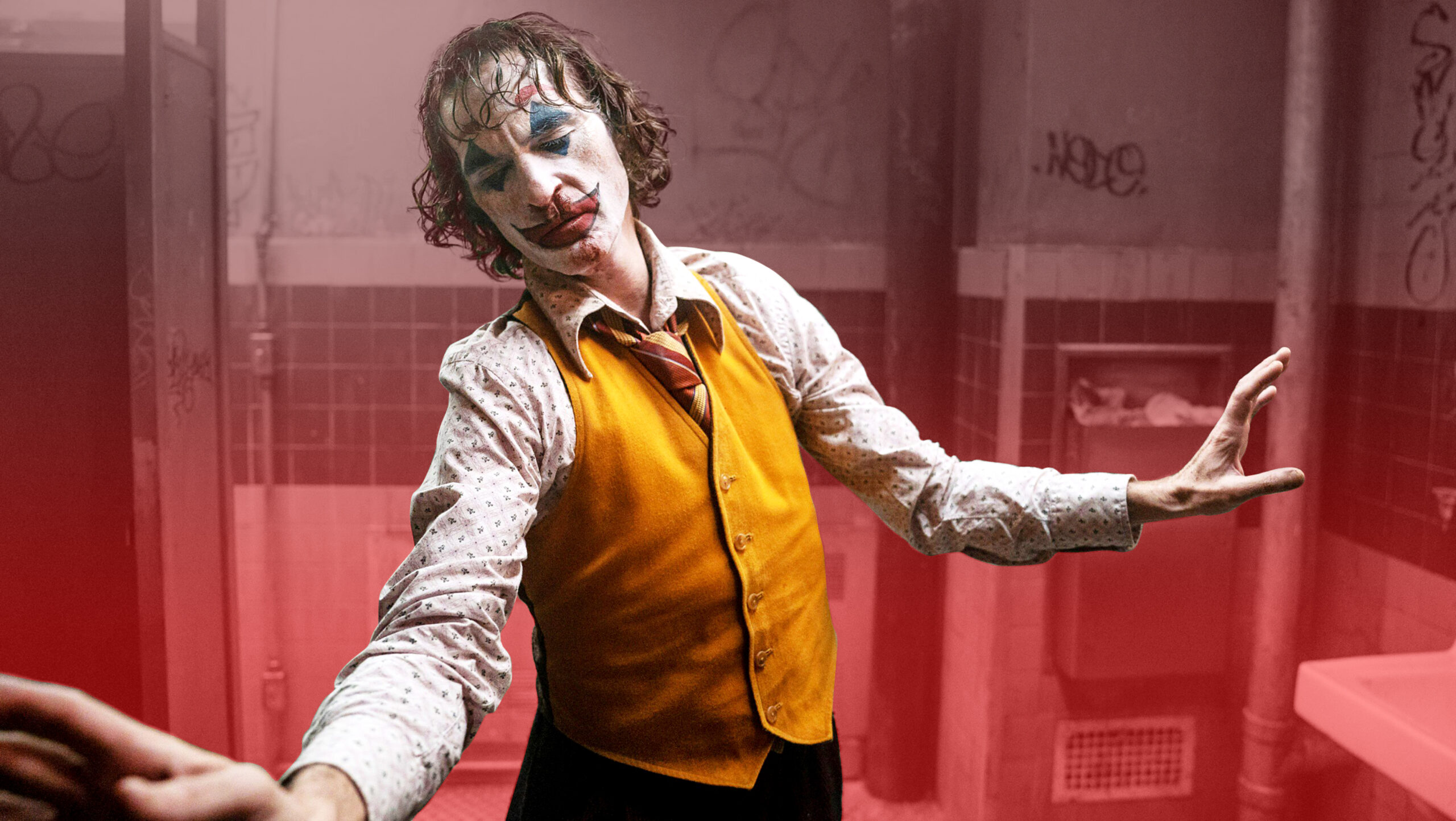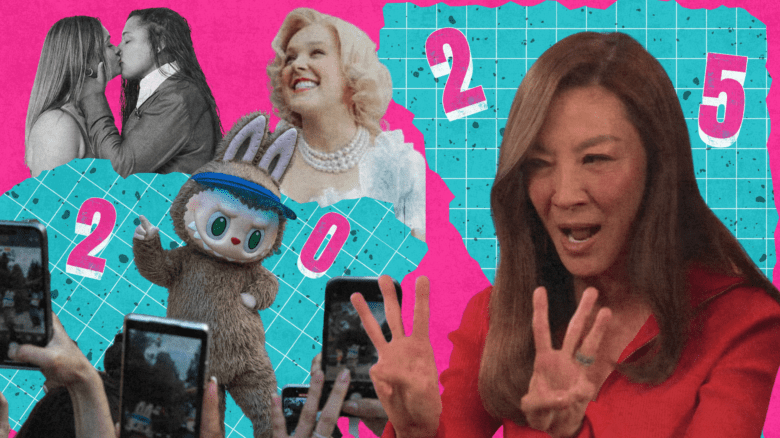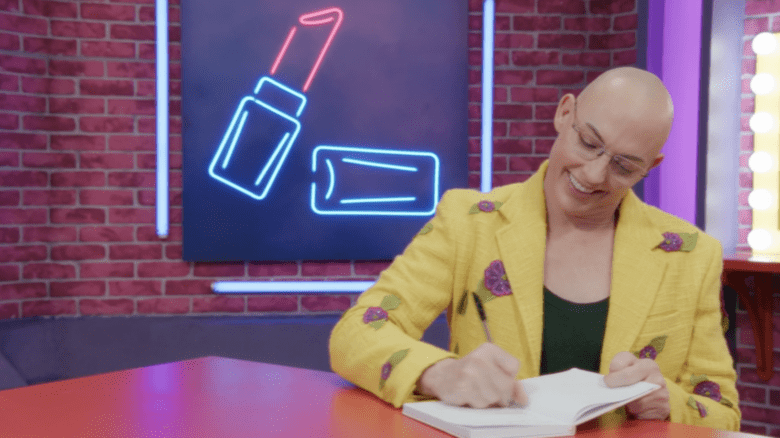Warning: Spoilers ahead for Joker.
Arthur Fleck suffers mightily. An aspiring comedian who isn’t funny in the slightest, he earns a meagre living as a rent-a-clown, enticing passersby into stores on Gotham City’s seediest retail strip. Strangers recoil from his prolonged, uncontrolled fits of laughter, the result of a Tourette-like neurological condition. At home, he shares a drab apartment with his needy elderly mother, while he pines for the attention of the out-of-his-league single mother who lives down the hall.
To the world, Arthur is a joke. And in the new movie Joker starring Joaquin Phoenix as Arthur, director Todd Phillips invents a new origin story to explain how that joke became one of Batman’s most enigmatic villains. In Phillips’ telling, a series of personal humiliations pushes Arthur, a troubled but otherwise meek man, to an act of extreme violence: He guns down three Wall Street preppies on a subway after they threaten him. Class tensions are already high in Gotham, which is designed to evoke a crime-ridden early 1980s New York. And so Arthur, by killing these representatives of the city’s elite, unwittingly becomes a folk hero for the 99 percent. Or, more precisely, a hero for the mainly white, male members of the 99 percent—but more on that in a bit.
A viral early trailer and critical buzz from the Venice Film Festival in August, where the film was awarded the Golden Lion top prize, has been met with an equal degree of concern that Joker will become a rallying point for incels and other raging members of the manosphere. The movie, after all, reflects much of the contemporary male resentment and alienation that sociologist and masculinities expert Michael Kimmel has dubbed “aggrieved entitlement”—the sense that men, particularly white straight men, are currently under attack and are losing a social and economic dominance that rightfully belongs to them. Variations of this sentiment can be seen in the misogynist Gamergate campaign, the 2017 Unite the Right white supremacist rally in Charlottesville, Virginia, and the epidemic of violence—hate crimes, beatings and murders—against trans people, particularly trans women of colour.
When I saw the film during the Toronto International Film Festival in early September, I messaged a friend to say that I wasn’t sure if the film was about angry men or if it was for angry men. A month later, I still don’t know. In an essay in the New York Times Dan Brooks writes, “Every new Joker embodies the element of chaos his audience fears…Our era fears political extremism and senseless public violence, which makes Arthur’s reactionary Joker an order of magnitude scarier than Jack Nicholson shooting acid out of a boutonniere.” Fears that Joker might inspire further violence seem to (so far) be unfounded: In response to concerns about a potential copy-cat of the 2012 mass shooting in Aurora, Colorado, during a screening of Batman: The Dark Knight Rises, police departments in some U.S. cities posted officers at movie theatres where Joker opened this past weekend.
Despite this, it’s pop culture—whether video games or the music of Marilyn Manson—that is still too often made a convenient scapegoat for the cause of mass killings. Meanwhile, more credible proven factors for such acts of violence, such as easy access to guns, documented misogynist views, and a history of relationship abuse go ignored.
Phillips, though, continues to muddy discussions of his own intentions. He has said Joker “isn’t political,” but has used the movie’s press tour to express his rather sulky feelings about this particular political and cultural moment. Joker is dark turn from his previous dude-comedy blockbusters like The Hangover trilogy; and in his explanation for this development, Phillips joins the swelling chorus of extremely rich and successful men—with lucrative Netflix deals, sold-out comedy tours and multimillion dollar movie studio contracts—to lament just how very dangerous they feel it’s become these days to tell a joke about women or queers. “Go try to be funny nowadays with this woke culture,” Phillips told Vanity Fair. “There were articles written about why comedies don’t work anymore—I’ll tell you why, because all the fucking funny guys are like, ‘Fuck this shit, because I don’t want to offend you…So I go, ‘How do I do something irreverent, but fuck comedy? Oh I know, let’s take the comic book movie universe and turn it on its head with this.’”
“Directly alluding to this history of racial discrimination, while at the same time recasting the victims as white, is a nasty bit of revisionism on Phillips’ part.”
To determine whether Phillips’ Joker is a “fuck comedy” or just a “fuck you” to his imagined politically correct haters, consider the work itself: As Arthur, Phoenix gives a stunning, showy, deeply committed performance and the camera lingers on (and on and on) his painfully emaciated frame and his grease-painted face during his episodes of tics and sobbing laughter. It’s a singular and claustrophobic point of view. The film even briefly draws the audience into Arthur’s entirely fantasized, and highly creepy, relationship with his neighbour, played by Atlanta’s Zazie Beetz.
It’s not that Arthur’s struggles aren’t worth attention. Late in the film it’s revealed that Arthur’s neurological condition is the result of horrific abuse. As a child, he was tortured by his mother’s boyfriend. It’s a gutting revelation, but the film isn’t interested in a nuanced exploration of that trauma, or of the broader societal injustices that have left Arthur and many, many others behind. Instead, he is portrayed as grotesque, with the blame for his violence placed largely on his disabilities and his mental illness—a damaging and persistent trope.
Absent a greater ideology, or even a grandiose ambition beyond wishing for a girlfriend and a stand-up comedy career, Arthur is a dull and senseless bad guy. As Sarah Hagi writes in her review of Joker, “villains aren’t expected to do the right thing, nor should they do the right thing…[but] take how Thanos was depicted in Infinity War as needing to eliminate half of life in the universe to restore balance because of overpopulation and violence: A bad guy is more interesting when he’s kind of right.”
Similarly, Black Panther’s Erik Killmonger was a compelling villain because part of his desire in conquering Wakanda was to force the isolationist kingdom to help other Black people with its magical vibranium. “Two billion people all over the world who look like us whose lives are much harder, and Wakanda has the tools to liberate them all,” Killmonger tells the Wakandan court. The movie turns the comic book universe on its head by revealing the core of idealism within Killmonger’s villainy. Phillips’ Joker, by contrast, is so steeped in self-pity, there appears to be no greater meaning or purpose to his suffering, or the suffering he ultimately inflicts.
More troubling is how Joker distorts its real-life references. Arthur’s shooting spree is a nod to Bernhard Goetz, a white vigilante gunman who, in 1984, shot four young men who were panhandling on the New York subway. Like Arthur, Goetz was hailed as a hero. The crack epidemic and an economic crisis contributed to tripling the city’s crime rates over the previous two decades, and Goetz was lauded by his frustrated and frightened fellow citizens for taking justice into his own hands. Unlike Arthur, though, whose targets were greed-is-good Gordon Gekko-types, Goetz’s were Black teenagers. And the support for Goetz was, in part, driven by stereotypes and a racist fear that all Black men pose a threat. These same fears were in play a few years later when five young Black and Latino men were falsely arrested and imprisoned for the rape of a jogger in Central Park. Donald Trump, then a real estate greed-is-good Gordon-Gekko–type, took out a full-page newspaper ad calling for the innocent teenagers to be executed. He has yet to apologize.
There’s a direct line from the tough-on-crime policies subsequently implemented in New York and elsewhere to the mass incarceration of Black and brown people, and to ongoing racial profiling by police. Directly alluding to this history of racial discrimination, while at the same time recasting the victims as white, is a nasty bit of revisionism on Phillips’ part. And there’s other strange racial dynamics at work in Joker, too.
While Arthur’s vigilantism is mainly directed at white men, he is seen on multiple occasions as being wounded by people of colour: His indifferent social worker is Black, the neighbour who doesn’t return his affection is Black, a group of teenagers who beat him up are Black and Latino. It’s a set-up that makes Arthur appear less culpable (the dispossessed white man is the new minority) and more heroic (his own victims are the one percent). And it’s a telling creative choice at a moment when hate crimes against marginalized groups are rising. Joker taps into the scary reality of the growing numbers of angry white men expressing their rage over wounds real and imagined—but their primary targets are not those who actually wield the vast share of power in our society but rather those they believe are taking whatever power they do have from them: women and LGBTQ2 people, immigrants, Jews, Muslims and Black people.
The problem isn’t that the audience is being asked to empathize with Arthur’s genuine trauma and pain, it’s that the film presents his wounds to the exclusion of everyone else’s. Arthur can’t see anyone besides himself: Not the bullying experienced by his co-worker with dwarfism, not the worry of his social worker who will possibly lose her job, not the fear in his neighbour’s eyes when he breaks into her home. Philosopher Kate Manne has coined a phrase for this common, inappropriate and disproportionate impulse to sympathize with men, particularly powerful ones: “himpathy.”
“Joker’s appeal is that he channels the anger and resentment that this legion feels because they themselves aren’t the rich guys and the winners.””
Arthur isn’t powerful yet, of course, but the men (and it is mostly white men) that eventually swarm to his Joker alter-ego soon become a powerful mob—not a movement for good, however, nor a campaign to overthrow the rich and create a more just society. Joker’s appeal is that he channels the anger and resentment that this legion feels because they themselves aren’t the rich guys and the winners.
Manne sees himpathy being deployed in coverage of men like this, too, in an ever-growing media obsession to understand these furious white guys, whether they are Nazis or killers like Elliot Rodger, and notes the problem in the extending of empathy and curiosity to people who have shown no interest in doing the same for others. “I see that as an interesting fixation on the psychology of the perpetrator but also this peculiarly individualizing conception where he is not part of a political syndrome,” Manne told Jezebel in 2018 about descriptions of Rodger as a “mad man” rather than as a member of a misogynist political movement. “Rather, he’s symptomatic of an individual illness; he’s a lone wolf in his crimes or a sick individual who needs therapy.”
And maybe it’s that observation that I can’t shake as I try to figure out what this film is about and who it is for. About a week after I saw Joker, another disturbing piece of film was released: The police interview with Alek Minassian, who in 2018, when he was 25, drove a van into pedestrians walking along Toronto’s Yonge Street, killing 10 and wounding 16. He admits to participating in incel online forums for several years and to taking inspiration from Rodger. He shows no remorse or regret during his talk with police. “I feel like I accomplished my mission,” he tells them.
In the face of real life villains like this, with their outsized capacity for destruction alongside the normalizing and mainstreaming of extremist views, Joker has nothing to say. Phillips’ film doesn’t illuminate the nature of violence or explain the pull toward chaos; it doesn’t even serve as escapist entertainment. It merely—and exhaustingly—presents mass violence as inevitable. And that kind of nihilism, at this moment, feels like a tasteless joke.


 Why you can trust Xtra
Why you can trust Xtra


